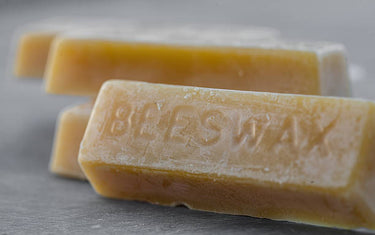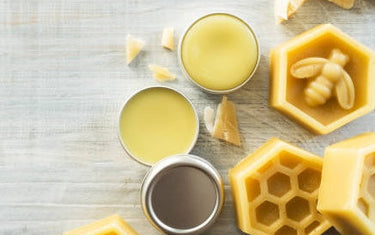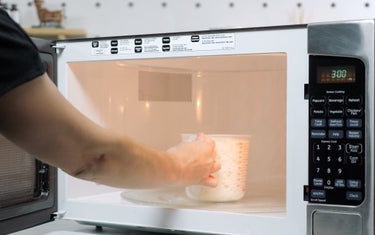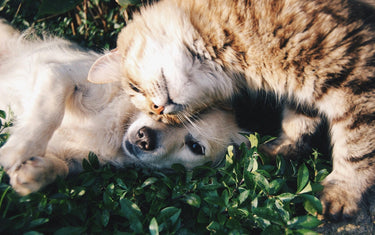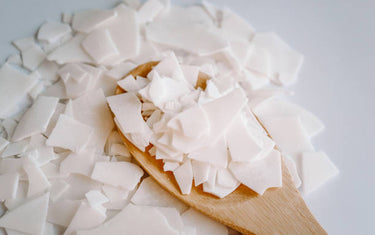6 min read / 17 May 2023 / Laura Garvin Gomez
Best Reeds for Diffusers
Unlock the secret to superior scent diffusion with our expert tips on the best reeds for your diffuser. Elevate your aromatic experience and create a captivating ambiance effortlessly.
Share this post
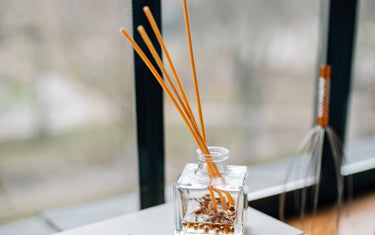
Whether you intend on buying a small or large reed diffuser, the question is, what are the best reeds for diffusers?
They provide a great way to add a wonderful fragrance to your home without having to use electricity or a heat source and are always on, so you can enjoy your favourite essential oil right throughout the day.
To give you an insight into the different types of reeds for diffusers, how they work and some helpful tips on how to get the most from them, we go into more detail below.
What are diffuser reeds?Diffuser reeds are synthetic or natural diffuser sticks that contain microscopic channels. When the reeds are placed into a diffuser, the essential oil is absorbed and transferred through these channels, slowly emitting the fragrance into the room. They are available in different sizes and thicknesses and can be easily trimmed, and can continue to release the fragrance for months at a time. |
How do reed diffusers work?
Reed diffusers work using a simple process, saturating the essential oil in a diffuser before emitting the fragrance into the air. No electricity or heat source is required to make a reed diffuser work, giving you a safe and practical way to enjoy your favourite fragrance anywhere in your home.
The diffusion rate is determined by the type of oil the reeds are absorbing and the material the reeds are made from, with some throwing the fragrance further into the room, whilst others remain closer to the diffuser.
Ideally, the reeds should be flipped on a regular basis, usually every few days, to ensure the fragrance remains fresh and fragrant. However, it is important to bear in mind that the more often the reeds are flipped, the faster the oil will evaporate.

What are the best reeds for diffusers?
Finding the best reeds for diffusers depends on personal preference, but when shopping around, there are two main types to look out for: natural and synthetic. We go into more detail about the different options below:
1. Bamboo reeds
Bamboo reeds may be a good option if you have a smaller budget available. However, the major downside of bamboo reeds is that they tend to be less effective compared to other types.
The lower price also means they usually do not last too long and will need to be replaced every few months. There are nodes inside a bamboo reed, which restricts the oil flow and puts a cap on how much fragrance can be diffused. But because the reeds come from a natural source this is a good sustainable option for anyone who wants to minimise any harm to the environment.
2. Rattan reeds
Rattan reeds are made from the rattan plant, a climbing plant that flourishes in tropical countries. The plant is incredibly strong and durable whilst still being lightweight and is commonly used for outdoor furniture because of its versatility.
Unlike bamboo sticks, rattan reeds do not contain nodes, as this would reduce the flow of the fragrance through the reed when placed into the oil. The diffusion rate is slower, so it takes a little longer to absorb and diffuse the fragrance and you may need more reeds to enjoy the same level of diffusion as fibre reeds.
On the plus side, rattan reed diffuser sticks do not clog up as quickly because they take longer to fill. They are also a very good eco-friendly option due to their natural source, as the plant is renewable and regenerates every 5-7 years.
3. Fibre reeds
Fibre reeds are synthetic and manufactured for oil diffusion, containing a mixture of cotton, polyester and polyamides. Oil distribution through fibre reeds produces a good scent throw, although this does impact the diffuser, meaning it will not last as long and will have to be replaced sooner than natural types.
You can buy fibre reeds in a variety of different colours to match your décor, making it easy to blend in with almost any type of interior design. They are not as ‘green’ as other reed types because fibre reeds are made from plastic and are not as biodegradable or eco-friendly as bamboo or rattan.

What is the best location for a reed diffuser?
The best place to position a reed diffuser is in a high traffic area. With the reeds emitting the oil into the air, this can be accelerated through general movement and motion in the room, which will help to throw the fragrance further.
You should avoid placing a reed diffuser close to a door that leads outside or near air conditioning units as the fragrance will quickly be lost. Positioning the diffuser nearby to a radiator will usually mean the oil evaporates faster, so try to keep it in a cool, but busy part of your home.
It’s also a good idea to place a coaster or mat underneath your reed diffuser, as oil can sometimes drip from the container and damage wooden, varnished, painted or plastic surfaces. And when you are flipping the reeds, the best place to do this is over the sink to avoid any damage being caused.
When you are changing the oil, it is also the best time to change the reeds. This is because they tend to get clogged and dusty over time and mixing an old fragrance with a new diffuser can alter the type of scent being thrown into the air.
How to use diffuser sticksIf you want to learn how to use diffuser sticks, you can use the four simple steps below:
You can follow the same steps when it comes to flipping the diffuser reeds, take care not to spill oil onto your own skin. It is advisable to use fewer sticks in smaller rooms, such as bathrooms or toilets, as the scent can become overpowering in a confined space. |
How do I make my reed diffuser smell stronger?
If you feel your diffuser reeds are not producing a strong enough scent, there are some things you can try to boost the fragrance.
To make your reed diffuser smell stronger you could:
- Add more reeds: The more reeds that are placed into the diffuser, the more powerful the scent should be in the room. If this doesn’t work, you may need to try a different essential oil or invest in a high-quality diffuser.
- Flipping the reeds: When the reeds are flipped in your diffuser, the essential oil is disturbed, especially if it has been stagnant for a while. Try to remember to flip the reeds every couple of weeks at least so you can get more from the fragrance.
- Replace the reeds: In general terms, diffuser reeds should be changed every 6 months or so. Over time they will clog up and lose their ability to emit the fragrance, and replacing them will ensure there is a clear channel to maintain a good diffusion rate.
- Topping up the oil: Refilling and topping up the essential oil can also make a big difference. The level of oil will slowly diminish over time, and if it becomes too low, the reeds may not be able to absorb enough to emit a strong fragrance.
It is also important to remember not to use the same reeds with different oils. This will clog up the reeds and also create unwanted scents that you will not want around your home.

Diffuser reeds are easy to use and maintain and offer a safe and affordable way to enjoy the benefits of your favourite essential oil at home. Whether you opt for rattan, bamboo or fibre reeds, be sure to place them in a busy part of your home and away from external doors and heat sources. To get more from your reeds, flip and change them regularly and try out some of our tips above if you need to boost the fragrance from time to time.




